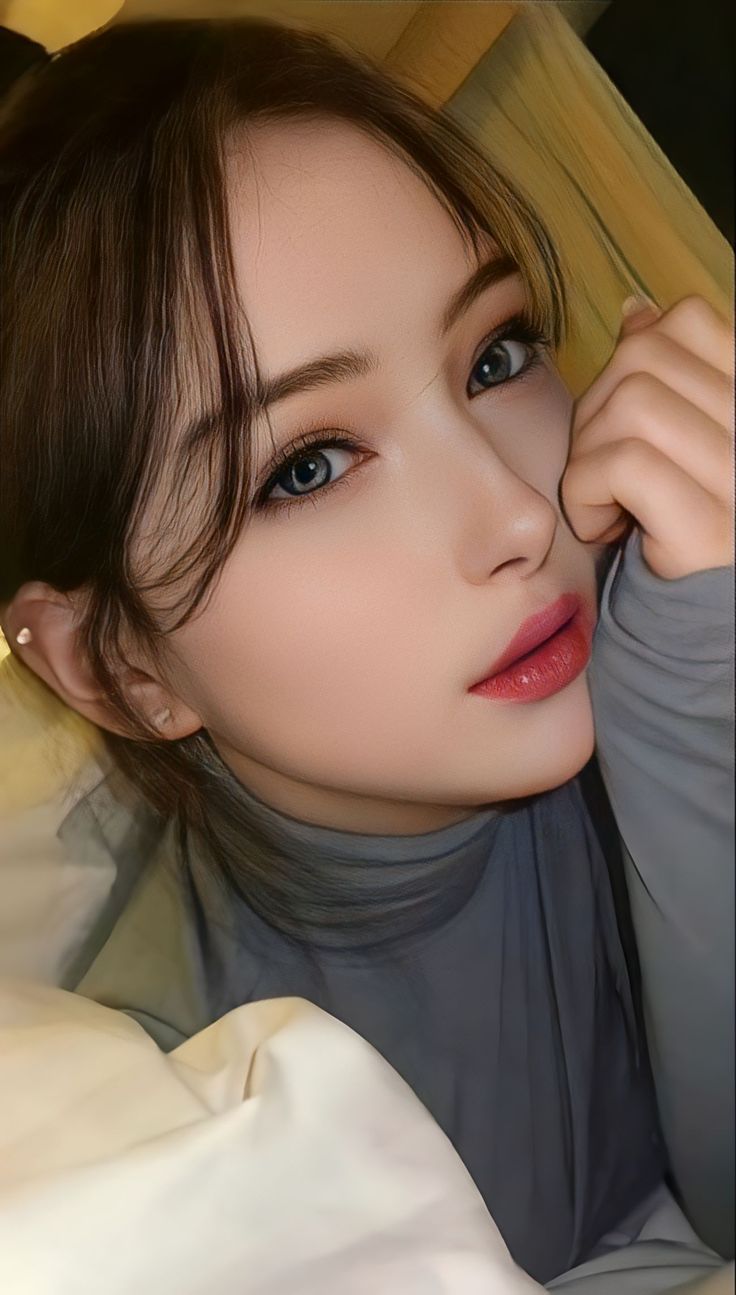Delving into How AI Interprets Beauty: A Tour of Digitally Perfect Women, this introduction immerses readers in a unique and compelling narrative, providing insights into how artificial intelligence interprets beauty standards in digitally perfect women. From facial symmetry to skin tone analysis, AI's impact on beauty ideals and perceptions is explored in depth.
Introduction to AI's Interpretation of Beauty
AI's interpretation of beauty revolves around the concept of digitally perfect women, where algorithms are used to determine beauty standards based on specific features and proportions. These digitally perfect women are often portrayed in media and advertising as flawless and ideal representations of beauty.
The impact of AI on beauty ideals and perceptions is significant, as it shapes how society views attractiveness and influences beauty trends.
AI Algorithms and Beauty Standards
AI algorithms analyze facial symmetry, skin quality, and other features to define beauty standards. These algorithms are programmed to recognize patterns and characteristics that are traditionally associated with beauty, such as clear skin, balanced facial proportions, and harmonious features. By processing vast amounts of data, AI can establish a set of criteria for what is considered beautiful in a digital context.
Impact on Beauty Ideals and Perceptions
The use of AI in interpreting beauty has both positive and negative implications. On one hand, it allows for the creation of visually appealing images that align with societal beauty norms. However, it can also perpetuate unrealistic standards of beauty that may not be attainable or representative of diversity.
AI's influence on beauty ideals can shape individuals' self-esteem and body image, as they compare themselves to digitally perfect women portrayed in media and online platforms.
Facial Symmetry and Proportions in AI Beauty Standards
Facial symmetry plays a crucial role in AI's interpretation of beauty when analyzing digitally perfect women. AI algorithms are designed to detect and measure symmetry in facial features such as eyes, nose, and mouth to determine attractiveness.
Significance of Facial Proportions in AI-generated Beauty Standards
- AI places a high importance on facial proportions, such as the golden ratio, to define beauty standards. The balance and harmony of facial features are key factors in determining attractiveness.
- By analyzing the distance between eyes, the size of the nose in relation to the face, and the shape of the lips, AI can create a digitally perfect representation of beauty based on ideal proportions.
- Facial symmetry and proportions are considered universal indicators of beauty in AI-generated standards, leading to the creation of aesthetically pleasing images.
Comparison of AI's Perception of Beauty to Traditional Beauty Standards
- AI's perception of beauty based on facial symmetry and proportions aligns closely with traditional beauty standards that have been established over centuries.
- Both AI and traditional beauty standards emphasize the importance of balanced facial features and harmonious proportions in defining attractiveness.
- However, AI's interpretation of beauty may also incorporate additional factors that go beyond traditional standards, such as precise measurements and mathematical calculations to achieve perfection.
Skin Tone and Texture Analysis by AI
AI technology plays a crucial role in analyzing skin tone and texture to create digitally perfect women. By understanding the importance of skin features, AI algorithms are able to enhance the overall appearance of digital models, meeting the beauty criteria set by the standards.
Role of Skin Features in AI's Beauty Criteria
Skin features such as tone and texture are key factors in determining beauty standards. AI algorithms carefully analyze these features to ensure that digital models have flawless skin that is perceived as aesthetically pleasing.
- AI technology can adjust skin tone to achieve a more uniform and radiant complexion, eliminating any imperfections or blemishes
.
- Texture analysis helps in creating smooth and flawless skin in digital models, giving them a flawless appearance that aligns with beauty standards.
- By focusing on skin features, AI ensures that digital models meet the criteria of beauty set by the industry, enhancing their overall attractiveness.
Hair and Eye Features in AI Beauty Assessment
When it comes to AI beauty assessment, hair and eye features play a crucial role in defining beauty standards. AI technology has advanced to the point where it can analyze and enhance these attributes to create digitally perfect women.
Hair Characteristics in AI Beauty Assessment
- AI evaluates hair characteristics such as shine, volume, length, and style to determine beauty standards.
- Texture and color are also taken into account by AI algorithms to enhance hair attributes for a more aesthetically pleasing look.
- Through machine learning, AI can recommend hairstyles and treatments based on individual hair characteristics for the desired outcome.
Importance of Eye Features in AI's Interpretation of Beauty
- AI places great importance on eye features such as shape, size, symmetry, and color in assessing beauty.
- Eye expressions are analyzed by AI to convey emotions and enhance overall attractiveness in digitally perfect women.
- Through image processing techniques, AI can adjust eye features to achieve a harmonious and captivating look.
Body Shape and Proportions in AI Beauty Standards
AI has redefined beauty standards by incorporating body shape and proportions into its assessment of attractiveness. The ideal body shape according to AI is based on mathematical calculations and symmetry, often deviating from traditional societal norms.
AI's Definition of Ideal Body Shape
- AI considers body proportions, waist-to-hip ratio, and overall symmetry to determine the ideal body shape for women.
- Measurements such as the golden ratio are often used by AI to assess the attractiveness of body features.
- AI tends to prioritize a balanced and proportionate figure over specific body types promoted by societal standards.
Role of Body Features in AI's Beauty Perception
- Body features play a crucial role in AI's perception of beauty, influencing overall attractiveness scores.
- AI analyzes factors like body mass index (BMI), muscle tone, and distribution of fat to evaluate body shape.
- Symmetry in body features is often emphasized by AI as a key factor in determining beauty.
Comparison with Societal Norms
- AI's beauty standards for body shape may differ significantly from societal norms, challenging traditional perceptions of beauty.
- While societal standards may prioritize certain body types, AI focuses more on mathematical precision and symmetry.
- This disparity raises questions about the influence of AI on shaping modern beauty ideals and the impact on individual self-image.
Wrap-Up
In conclusion, How AI Interprets Beauty: A Tour of Digitally Perfect Women sheds light on the fascinating intersection of technology and beauty standards. By understanding AI's role in defining digitally perfect women, we can reflect on the evolving nature of beauty in the digital age.
Questions and Answers
How does AI determine beauty standards?
AI determines beauty standards through analyzing factors like facial symmetry, skin tone, and body proportions to create digitally perfect women based on algorithmic criteria.
What role do skin features play in AI's beauty criteria?
Skin features are crucial in AI's beauty criteria as they contribute to the overall appearance of digitally perfect women, with AI algorithms enhancing skin tone and texture to meet specific beauty standards.
How does AI enhance hair and eye attributes for digitally perfect women?
AI evaluates hair characteristics and eye features to enhance the beauty of digitally perfect women, ensuring that these attributes align with the defined beauty standards set by AI algorithms.










